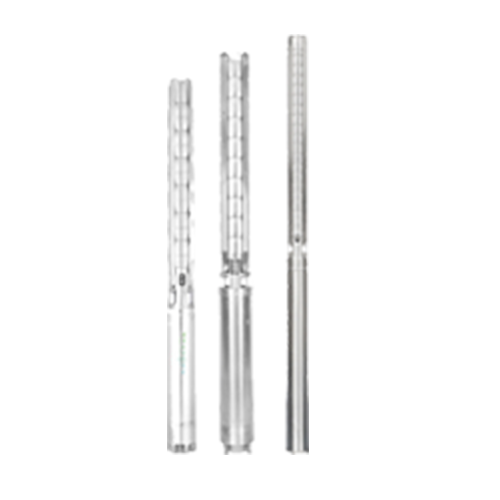Dec . 12, 2024 04:35 Back to list
submersible grinder pumps
An Overview of Submersible Grinder Pumps
Submersible grinder pumps represent a vital component in the world of wastewater management. Designed to handle the challenging task of moving wastewater, these pumps are especially effective for environments where solids and fibrous materials are present. Understanding the functionality and advantages of submersible grinder pumps can help homeowners and businesses alike make informed decisions about their wastewater management solutions.
What Are Submersible Grinder Pumps?
Submersible grinder pumps are specially designed pumps that operate while submerged in the liquid they are pumping. Equipped with a powerful grinder mechanism, these pumps efficiently grind solid waste into smaller particles, allowing for easier transportation through the sewage system. This design significantly reduces the risk of clogs and blockages in the plumbing, which can lead to costly repairs and inconveniences.
Key Features and Mechanisms
One of the most defining features of submersible grinder pumps is their grinder mechanism. Typically, this consists of rotating blades or cutting systems integrated into the pump. These blades reduce solids such as food waste, rags, and other debris into a fine slurry, ensuring that they can be effectively moved through smaller pipes.
Submersible grinder pumps are also constructed from durable, corrosion-resistant materials, allowing them to withstand harsh environments and chemical exposure. They often come equipped with a float switch that activates the pump when the water level rises, ensuring that the system works efficiently and prevents overflow.
Benefits of Using Submersible Grinder Pumps
submersible grinder pumps

1. Efficient Waste Management The primary benefit of submersible grinder pumps is their efficiency in transferring wastewater containing solids. By grinding waste into smaller pieces, these pumps minimize the risk of clogs within pipes, making them ideal for both residential and commercial applications.
2. Space-Saving Unlike traditional sewage pumps that require above-ground installation, submersible grinder pumps are installed below the water level. This saves space and reduces the visual impact of pumping systems, making them particularly suitable for urban settings where real estate is at a premium.
3. Versatility Submersible grinder pumps can handle a wide range of fluids, including wastewater from sinks, toilets, and industrial processes. Their ability to process solids makes them a practical choice for diverse applications.
4. Low Maintenance Due to their robust design and the grinding mechanism that prevents blockages, submersible grinder pumps typically require less maintenance than traditional pumps. This leads to longer operational life and reduced overall costs.
5. Environmentally Friendly By effectively managing wastewater, these pumps contribute to reducing environmental pollution. Properly functioning grinder pumps ensure that waste is treated and disposed of safely, diminishing the risk of contamination.
Conclusion
Submersible grinder pumps are an essential investment for anyone dealing with wastewater management that involves solids. Their grinding capability, space efficiency, and versatility make them a superior choice compared to conventional sewage pumps. Whether for residential use in a basement setting or for more extensive applications in commercial or industrial environments, understanding and utilizing submersible grinder pumps can lead to more effective and sustainable waste management solutions. Investing in modern, efficient technology not only helps ensure compliance with environmental regulations but also provides peace of mind in maintaining a clean and safe space. As the demand for environmentally sustainable practices continues to increase, submersible grinder pumps will play a critical role in efficient wastewater management systems.
-
Submersible Water Pump: The Efficient 'Power Pioneer' of the Underwater World
NewsJul.01,2025
-
Submersible Pond Pump: The Hidden Guardian of Water Landscape Ecology
NewsJul.01,2025
-
Stainless Well Pump: A Reliable and Durable Pumping Main Force
NewsJul.01,2025
-
Stainless Steel Submersible Pump: An Efficient and Versatile Tool for Underwater Operations
NewsJul.01,2025
-
Deep Well Submersible Pump: An Efficient 'Sucker' of Groundwater Sources
NewsJul.01,2025
-
Deep Water Well Pump: An Efficient 'Sucker' of Groundwater Sources
NewsJul.01,2025
-
 Submersible Water Pump: The Efficient 'Power Pioneer' of the Underwater WorldIn the field of hydraulic equipment, the Submersible Water Pump has become the core equipment for underwater operations and water resource transportation due to its unique design and excellent performance.Detail
Submersible Water Pump: The Efficient 'Power Pioneer' of the Underwater WorldIn the field of hydraulic equipment, the Submersible Water Pump has become the core equipment for underwater operations and water resource transportation due to its unique design and excellent performance.Detail -
 Submersible Pond Pump: The Hidden Guardian of Water Landscape EcologyIn courtyard landscapes, ecological ponds, and even small-scale water conservancy projects, there is a silent yet indispensable equipment - the Submersible Pond Pump.Detail
Submersible Pond Pump: The Hidden Guardian of Water Landscape EcologyIn courtyard landscapes, ecological ponds, and even small-scale water conservancy projects, there is a silent yet indispensable equipment - the Submersible Pond Pump.Detail -
 Stainless Well Pump: A Reliable and Durable Pumping Main ForceIn the field of water resource transportation, Stainless Well Pump has become the core equipment for various pumping scenarios with its excellent performance and reliable quality.Detail
Stainless Well Pump: A Reliable and Durable Pumping Main ForceIn the field of water resource transportation, Stainless Well Pump has become the core equipment for various pumping scenarios with its excellent performance and reliable quality.Detail
